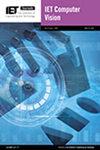Occluded object 6D pose estimation using foreground probability compensation
Abstract
6D object pose estimation usually refers to acquiring the 6D pose information of 3D objects in the sensor coordinate system using computer vision techniques. However, the task faces numerous challenges due to the complexity of natural scenes. One of the most significant challenges is occlusion, which is an unavoidable situation in 3D scenes and poses a significant obstacle in real-world applications. To tackle this issue, we propose a novel 6D pose estimation algorithm based on RGB-D images, aiming for enhanced robustness in occluded environments. Our approach follows the basic architecture of keypoint-based pose estimation algorithms. To better leverage complementary information of RGB-D data, we introduce a novel foreground probability-guided sampling strategy at the network's input stage. This strategy mitigates the sampling ratio imbalance between foreground and background points due to smaller foreground objects in occluded environments. Moreover, considering the impact of occlusion on semantic segmentation networks, we introduce a new object segmentation module. This module utilises traditional image processing techniques to compensate for severe semantic segmentation errors of deep learning networks. We evaluate our algorithm using the Occlusion LineMOD public dataset. Experimental results demonstrate that our method is more robust in occlusion environments compared to existing state-of-the-art algorithms. It maintains stable performance even in scenarios with no or low occlusion.



 求助内容:
求助内容: 应助结果提醒方式:
应助结果提醒方式:


